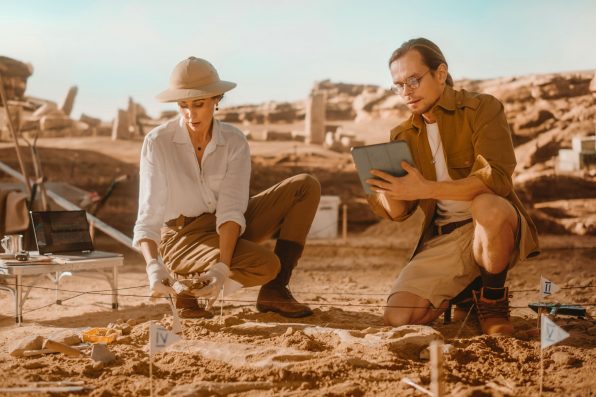The Chicxulub Crater Was Created 66 Million Years Ago When A Large Asteroid Struck Earth And Killed The Dinosaurs, But Recent Rock Samples Suggest The Impact Didn’t Release As Much Carbon Dioxide As Initially Thought

When a large dinosaur-killing asteroid struck the Earth approximately 66 million years ago, the Chicxulub crater was formed. It is buried underneath the Yucatán Peninsula in Mexico and has been identified as one of the largest impact craters on the planet.
Within the crater, samples of rock were taken, and their temperature at the time of the asteroid collision was measured using a paleothermometer. Researchers found that the crater’s temperature reached 625 degrees Fahrenheit at the end of the Cretaceous period, which occurred 145 million to 66 million years ago.
The new finding also indicates that the asteroid impact did not unleash as much carbon dioxide as initially believed. This revelation has the potential to reshape scientists’ perspectives on the mass extinction event that came afterward.
The asteroid came barreling toward Earth at speeds of around 27,000 miles per hour. When it crashed into the ground, it created a cavity in what is now the Gulf of Mexico, which is roughly 124 miles wide. Shortly after the strike, tsunami waves filled the crater with sediment. In the millions of years since, it became buried beneath layers of rock.
“You cannot access it that easily, but on the other hand, it’s very well-preserved,” said Pim Kaskes, the lead author of the study and a geologist at Université libre de Bruxelles in Brussels. “You just have to find the right rocks, the right material, and apply the right techniques to unravel its mysteries.”
In 2016, Kaskes and his team studied rock samples from the peak ring region in the center of the crater. They used a paleothermometer on the rocks, a methodology that provides an estimate of the temperature at the time a natural material was formed. It works by detecting the presence of carbon-13 and oxygen-18 isotope bonds in carbonate minerals.
They initially discovered that the heat produced by the asteroid impact would have reached temperatures ranging from the thousands to tens of thousands of degrees. However, Kaskes noted that the rocks were probably vaporized, so they couldn’t give an accurate measurement. Instead, they looked for temperatures in rocks from when the asteroid first hit the Earth.
The highest temperature of 625 degrees came from rocks that were more than 2,300 feet below the ocean floor. Following the asteroid strike, these rocks had been significantly warmer than the maximum temperature of the ocean during the late Cretaceous period, which would have been 95.9 degrees Fahrenheit.
To the researchers, that clearly meant some other activity was occurring. According to Kaskes, thermal decarbonation and rapid back reaction may have been taking place. The processes involve highly reactive calcium oxide recombining with carbon dioxide that was set free from vaporized rocks. As the chemical compounds came together, they formed new calcium carbonate crystals.

Gorodenkoff – stock.adobe.com – illustrative purposes only, not the actual people
If that really did happen, then less carbon dioxide entered the atmosphere than originally thought because much of it would have been quickly reused for calcium carbonate.
With a reduced amount of carbon dioxide in the atmosphere during the mass extinction event, the effects of global warming and ocean acidification would not have been as extreme.
Overall, the paleothermometer has helped shed light on the circumstances that unfolded 66 million years ago.
It can also be applied to impact craters in other parts of the world, providing new opportunities to gain more knowledge about asteroid collisions.
Sign up for Chip Chick’s newsletter and get stories like this delivered to your inbox.
More About:News